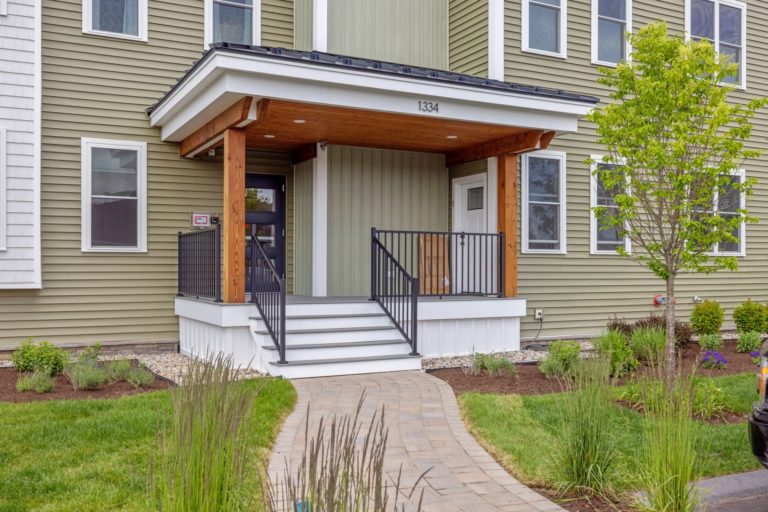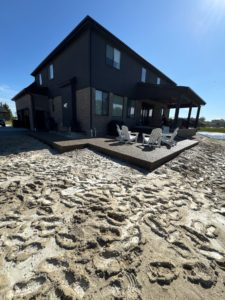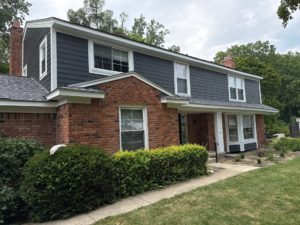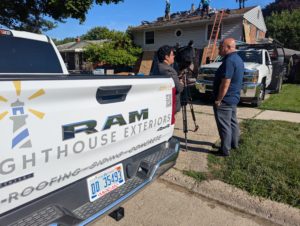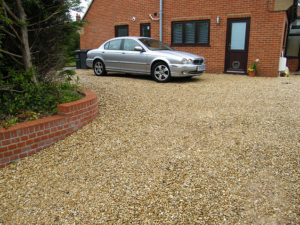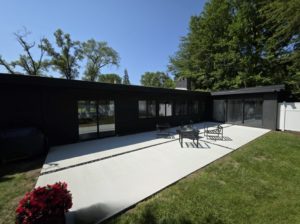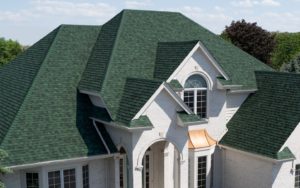Choosing siding for your home is an important decision. The right siding not only enhances your home’s appearance but also offers protection against the elements. One popular choice among homeowners is James Hardie siding, known for its durability and visual appeal. But how does it compare to other siding materials like vinyl and wood?
James Hardie siding is made from fiber cement, a blend of cement, sand, and cellulose fibers. This unique composition gives it impressive strength and longevity. Homeowners often consider James Hardie siding for its ability to withstand harsh weather conditions, including hail and wind damage. It’s also resistant to pests, mold, and fire, making it a safe choice for any home.
While James Hardie siding has many benefits, it’s essential to see how it stacks up against other common siding materials. Vinyl siding, known for its affordability and easy installation, is another popular option. Wood siding, cherished for its natural beauty and classic look, also has its own set of advantages and disadvantages. Comparing these options helps you make an informed choice that best suits your home’s needs and your personal preferences.
Overview of James Hardie Siding
James Hardie siding, also known as Hardie Board, is a fiber cement siding product. It is made from a combination of cement, sand, and cellulose fibers. This composition ensures that the siding is strong, durable, and long-lasting.
James Hardie siding comes in various styles, including planks, shingles, and panels. Homeowners have a wide range of colors and textures to choose from, allowing them to customize the exterior look of their homes. The siding is engineered to withstand different climate conditions, making it suitable for various geographic locations.
One of the key features of James Hardie siding is its ability to mimic the appearance of wood without the drawbacks, such as rot or susceptibility to pests. This makes it a popular choice for homeowners looking for a high-end, elegant exterior without the maintenance headaches. The siding’s composition also ensures it is fire-resistant, providing an added layer of safety for your home.
Benefits of James Hardie Siding
James Hardie siding offers multiple benefits that make it a preferred choice for many homeowners. Here are some key advantages:
1. Durability: James Hardie siding is designed to last for decades. It resists damage from weather conditions, including hail and strong winds, making it ideal for homes in areas prone to severe weather.
2. Low Maintenance: Unlike wood siding, James Hardie siding doesn’t require frequent painting or staining. Simply cleaning it with a hose or light pressure washing can keep it looking new for years.
3. Aesthetic Appeal: With a wide range of colors and textures available, James Hardie siding can match any design preference. Whether you want a modern look or a traditional style, there are options to suit your tastes.
4. Fire Resistant: The fiber cement composition makes the siding fire-resistant. This adds a layer of protection to your home that you wouldn’t get with some other materials.
5. Pest Resistant: James Hardie siding is not susceptible to termites or other pests that can damage wood. This reduces the risk of infestations and the need for costly repairs.
Overall, these benefits make James Hardie siding a worthwhile investment, enhancing both the look and durability of your home.
Comparison with Vinyl Siding
While James Hardie siding has many advantages, it’s useful to compare it with vinyl siding, another popular option. Vinyl siding is made from PVC (polyvinyl chloride) and is widely used for its affordability and ease of installation.
Vinyl siding is less expensive upfront compared to James Hardie siding. The material is lightweight, which can reduce labor costs because it’s easier to install. However, vinyl siding lacks the durability of James Hardie siding. It is more susceptible to damage from extreme weather conditions like hail and strong winds. Vinyl can crack, warp, or even melt in high temperatures, whereas James Hardie siding remains stable and intact.
In terms of maintenance, vinyl siding is relatively low-maintenance, similar to James Hardie siding. It doesn’t require painting and is easy to clean. However, vinyl can fade over time, needing replacement sooner than James Hardie siding.
Aesthetically, vinyl siding offers fewer customization options than James Hardie siding. While you can find vinyl in different colors and styles, it often lacks the textured, high-end look that fiber cement provides. James Hardie siding offers a more premium, wood-like appearance without the associated upkeep.
Comparison with Wood Siding
Wood siding has a classic and timeless appeal, but how does it compare to James Hardie siding? Wood siding is often chosen for its natural beauty and ability to be easily customized with paint or stain. However, it comes with several drawbacks that make James Hardie siding a more practical choice for many homeowners.
One of the biggest issues with wood siding is its vulnerability to weather and pests. Wood can rot, warp, and crack over time, especially in regions with high humidity or fluctuating temperatures. It is also a target for termites and other pests. James Hardie siding, being made of fiber cement, is resistant to these issues, providing a more durable and long-lasting solution.
Wood siding requires regular maintenance, including painting, sealing, and occasional repairs. This ongoing upkeep can be both time-consuming and costly. In contrast, James Hardie siding requires less frequent maintenance and provides superior resistance to weather, pests, and fire.
Aesthetically, wood siding is beautiful and offers a natural texture that many homeowners love. However, James Hardie siding can effectively mimic the appearance of wood without the associated problems. This makes it a great alternative for those who want the look of wood but prefer a more durable and low-maintenance option.
Conclusion
Choosing the right siding for your home is a crucial decision that impacts both its appearance and longevity. James Hardie siding stands out for its durability, low maintenance, and beautiful design options. When compared to vinyl and wood siding, it offers superior resistance to weather conditions, pests, and fire, making it a highly practical and attractive option for many homeowners.
At Lighthouse Exteriors, we understand the importance of protecting your home from hail and wind damage. Our team can guide you through the process of selecting the best energy-efficient siding for your needs and assist with any insurance claims for damage. Contact Lighthouse Exteriors today to learn more about how we can help you protect and beautify your home with James Hardie siding.

